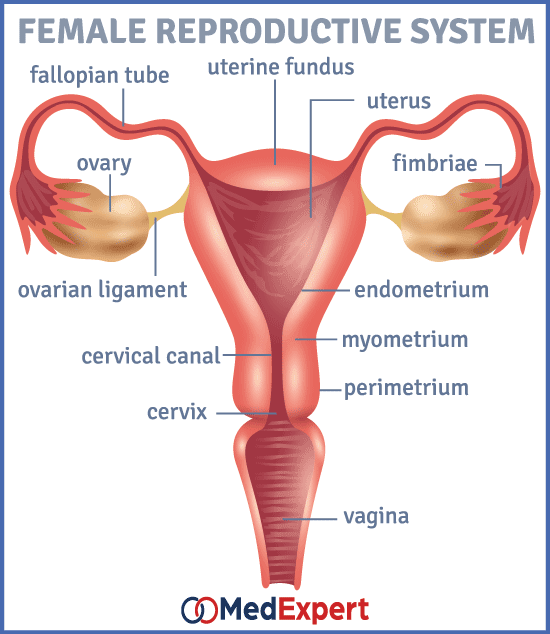CERVICAL CANAL BLOCKAGE/CERVICAL STENOSIS
Abnormal narrowing with obstruction of cervical canal, which connects uterus and vagina is called cervical canal blockage. Cervical stenosis symptoms are usually linked to blood outflow during menses. Cervical canal blockage treatment is prescribed if this condition causes complications, such as hematometra, pyometra, infertility. More information about specific symptoms, treatment and diagnostic methods of this condition you may find below.
The cervix is part of the inverted pear-shaped uterus that corresponds to the narrow stalk end of the pear. This muscular structure is about 3-5 cm in length and is located partly in the upper vagina, extending into the space behind the bladder and in front of the rectum.

WHAT DOES THE CERVIX DO?
It acts as a canal between the vagina and the body of the uterus.
Many women have cervical stenosis and never even know it. This is due to the fact that even the most common cervical stenosis symptoms are not overly common for most women and it can easily be mistaken for something else.
Cervical stenosis is a narrowing of the lower region of the cervix, which is the opening of the womb or uterus.
This condition may be complete or partial and it may result in a hematometra (accumulation of blood in the uterus) or retrograde flow of menstrual blood into the pelvis in premenopausal women, possibly causing endometriosis. A pyometra (accumulation of pus in the uterus) may also develop, especially in women with cervical or uterine cancer.
CERVICAL STENOSIS SYMPTOMS
Common symptoms in premenopausal women include:
- Amenorrhea
- Dysmenorrhea
- Abnormal bleeding
- Infertility
Postmenopausal women may be asymptomatic for long periods. Hematometra or pyometra may cause uterine distention or sometimes a palpable mass.
CERVICAL CANAL BLOCKAGE TREATMENT OPTIONS
- WIDENING OF THE CERVIX WITH THE DILATOR: Only women with symptoms of a hematometra, or a pyometra will receive the cervical canal blockage treatment. The cervix may be widened by inserting small, lubricated metal rods through its opening then larger dilators are progressively inserted. Doctors may place a tube (cervical stent) in the cervix for 4 to 6 weeks to try to keep the cervix open
- LASER TREATMENT: Laser treatment can be used to vaporize the scarring if the cervical stenosis caused by scar tissue
- SURGERY: Surgical enlargement of the cervical canal can be done by hysteroscopic shaving of the cervical tissue.
DIAGNOSING CERVICAL CANAL BLOCKAGE/CERVICAL STENOSIS
- History taking and physical examination: Your doctor will ask you questions about your previous menstrual periods, family history and the symptoms that you have. This will help your doctor to evaluate the condition.
- Hysterosalpingogram: The stenosis may appear as a narrowing of the endocervical canal (normal diameter: 0.5-3.0 cm) or it may manifest as a complete obliteration of the cervix. This will prevent the insertion of the hysterosalpingographic catheter.
- Pelvic ultrasound: Even though it is difficult to image the stenosis, visualisation of an underlying mass in the appropriate location may suggest the condition especially if it’s complicated by proximal dilatation of the female genital tract.


